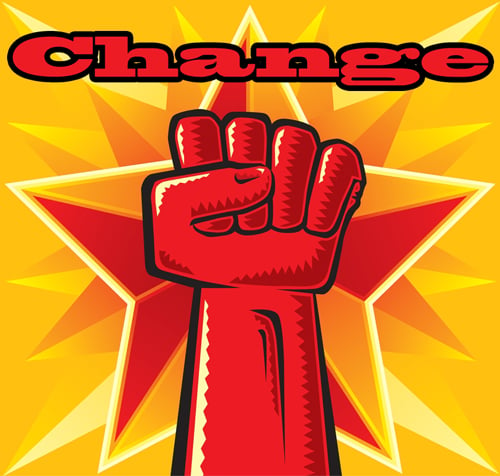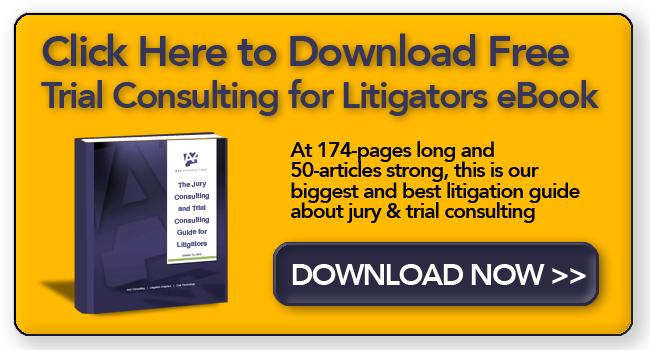by Ken Lopez
Founder/CEO
A2L Consulting
I believe that jury consulting has been done the wrong way for 40 years -- at least the way most people do it. I want to share some new ideas, best practices, beliefs and around-the-corner thinking about trial consulting (a/k/a jury research, jury consulting, litigation consulting). If you can see how trial consulting is changing and will change, you will see how it has become more valuable than it was even five years ago and how bright its future is.
Why do I think there is a jury consulting problem? I had a potential client say to me recently, “We need your trial presentation help, but I want you to know that I don't believe in jury consulting.” He was surprised when I said, “I agree,” because I knew what he meant.
To clarify a key point: I was very proud when A2L Consulting was recently voted the #1 jury consulting firm by the readers of Legal Times. Our jury consultants are amazing industry veterans, they do amazing work, and obviously the legal marketplace agrees with me -- but they don't do it exactly the same way people did it 10, 20, 30 or 40 years ago. That's why I believe we’re being recognized on the national stage so often for both jury consulting and litigation graphics consulting, separately.
When that client pushed back on jury consulting, I deeply empathized. It turns out that jury consulting, as it is largely perceived and has largely been conducted, is the kind of thing that you either believe in or you don't, and everyone who has an opinion is pretty sure they are right.
Like many of you, I've watched countless mock trials, focus groups and related events, and they mostly look the same, right? Jurors are recruited, arguments are made for both sides of the case, jurors are sent to various rooms, and we consultants and litigators run between poorly decorated one-way mirrored rooms or hotel suites collecting insights from the deliberations. At the end, we gather around the jury consulting guru and are offered early words of wisdom -- weeks before we get the final 200-page report. Don't get me wrong, we learn a lot from this process, we win cases because we do this work, and cases get settled because of what happens in these dark rooms. And so it's been done for 40 years.
But, 40 years ago, seat belts were just catching on, you smoked at the doctor's office, and we used the miracle-like asbestos everywhere we could. We've improved those things, right? So, why is it that most jury consulting organizations are conducting jury research efforts roughly the same way they did in the 1980s or 1990s? Where's the improvement? How have they evolved with the changes in the litigation landscape? Remember when e-filing was “new”? Or when discovery wasn’t done electronically? The old arena is forever changed, and we must change to remain relevant.
We and some other leading jury consultants are doing some amazing work in this area, and we are changing the field for the better. In the sincere spirit of elevating the industry, here’s a behind-the-scenes look at some of the work we are doing and at some of the advances you can expect to see soon.
1. Blending of Testing Between Litigation Graphics & Arguments: There is broad scientific consensus that the majority of jurors learn best visually. I have seen a single graphic win a case. Yet, it is beyond perplexing to me that most jury consulting firms neglect to seriously test (or test at all) visual presentations during mock trials. Few meaningful suggestions for graphics come out of most jury exercises. This is, thankfully, changing, and we wrote about the need for testing trial graphics in mock trials in 2011.
2. Biometric Testing: We're testing a variety of objective biometric measures -- not people pushing a silly little button when they like something for a moment -- to measure sentiment and real reactions to arguments and graphics. Marketers have been using this approach for years, and we're in the testing stages of bringing this to the legal industry. Expect to see more of this in the future.
3. Massively Distributed Argument Testing: If there is a theme of this decade in business, it is disaggregation, and I love it. We're getting rid of middlemen everywhere from entertainment to car dealers to computers to art. The same is true in jury consulting. Increasingly, we are able to use venue-specific groups of people to test narrow slices of a case and then ‘reassemble’ those results to get a sense of reactions to arguments, evidence and graphics without revealing the overall context of our inquiry to protect confidentiality. This is cutting-edge work, and you can expect to hear more about this from our firm. Maybe you just want to know whether or not your defendant should testify, or whether to put on alternative damages, or decide which expert is better received. No need for the Full Monty.
4. Near-Real Time Testing: Social media, the Internet and the rise of crowdsourcing have given rise to a virtual social computer that is the minds of thousands or millions of people. With tools we are using now, we can ask 10,000 people in a particular venue which litigation graphic tells a particular story best and have an answer in minutes, not days or weeks, with a robust sample size.
5. More Easily Targeted Demographics: Social media allows us to quickly identify a group of forty-ish women in a small Midwestern town who prefer one political party over another. Now, not every potential juror is on social media, but we know a certain percentage will be. And, the better we can replicate the demographics of a jury pool, the better we can test a case. Perhaps you are especially concerned with people most like your opposing party. It no longer has to be a theoretical inquiry – it can be tested rapidly and cost-effectively.
6. Blending of Services & Service Providers: There used to be jury consultants and there used to be litigation graphics consultants and there used to be image/acting/communication consultants all serving in their various silos. Now, these are either found under one roof, or you have a problem.
7. Cost Efficiency: With most jury consulting efforts in large civil cases costing in the multiple six figures, there is a compelling need to achieve cost efficiencies by offering tiered services and utilizing technology. We're doing both, using tools like our micro-mock and creating custom research designs that fit the needs and the budget. For 40 years, most providers have had cookie-cutter formats that are used over and over, but that’s no longer the way to go.
8. Moving the Focus to Practice: I think there was real hope when jury consulting started back in the 1970s and 1980s that it would reliably predict the outcomes of cases, but I don't think you'll hear many credible jury consultants suggest this anymore. We do learn a ton from each exercise, however, and this provides enormous value to clients. I think we should be spending more time on something simple that mock trials help with -- practice. As my colleague Ryan Flax often says, we call it the practice of law, but there is very little practicing going on. I think that's brilliant. With his clients, he is encouraging more practice through a variety of unique events that are not as pricey as a full-blown mock exercise. By using a savvy outside consultant who can observe, critique, and help improve the form and substance of presentations and the visual support that bring them to life, a fortune can be spared instead of spent.
9. Data, Big Data and More Data - I frown on the term “big data.” I think it is a silly rebranding of something that's always existed. That said, as we now have tools that allow us to process large datasets, we can now do more with the data we collect. This includes analyzing arguments, word use, comparing various graphics options to find a winner - just as marketers have been doing for decades - and now in near-real time.
10. Predictive Beliefs Based on Social Media: Did you know that you can reliably predict someone's personality and behaviors if you have access to their social media? Well, it's true. We can tell you how someone is likely to vote, whether they'll likely be a smoker, or how they'll feel about environmental issues. They don't even have to talk about these things on Facebook directly. We can actually predict their behavior if we have enough data. This knowledge will be used in jury selection and to help move public opinion on various issues.
11. Longer Term Opinion Shifting: Increasingly, our work is focused both on litigation and on issue advocacy, and increasingly they are linked. So, when we are asked to help shift public opinion on an issue, we have to measure it. With the tools we have available to us, we can reliably measure public opinion on an issue over time. As litigation, public opinion and legislative action come closer to one another with time, expect to see more and more law firms directing this type of work.
12. Judge Consulting: I think we've done as many mock bench trials in the past three years as we have mock jury trial exercises. I'm still not even sure what to call the service. Obviously, it's not jury consulting, so I guess we'll call it trial consulting. As more and more data is available about judges, it becomes easier to simulate the environment of a bench trial, and so that's exactly what we're doing here, even in appellate arguments.
13. Earlier Evaluation: Considering that 98 percent of cases settle before trial, the optimal timing to involve outside experts to evaluate and troubleshoot a case is in discovery when there’s time to shape the arguments, attacks, and prepare for depositions better – where the real battle is actually being waged and the groundwork laid for dispositive motions. That’s the time to bring in a trial consultant.







Leave a Comment